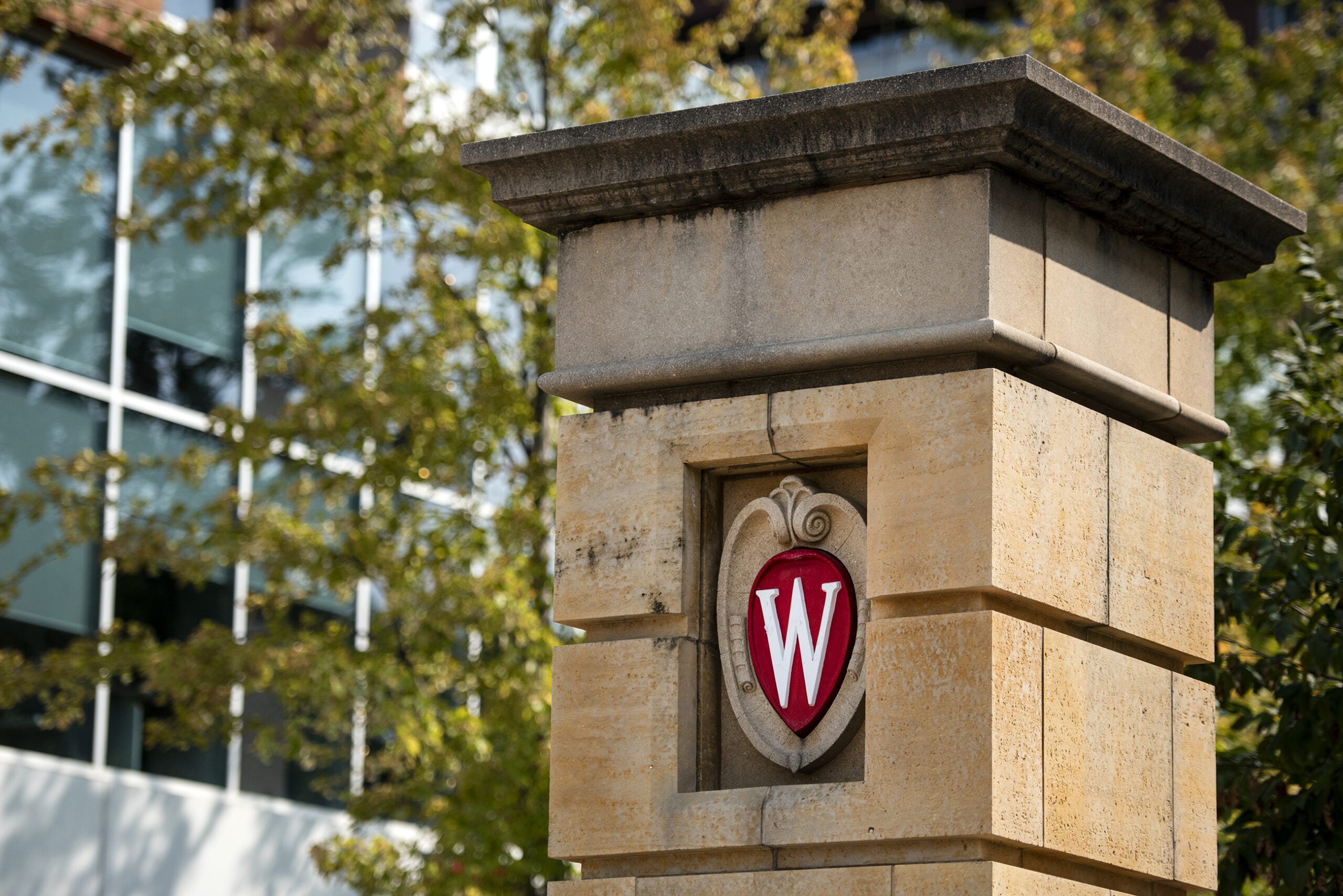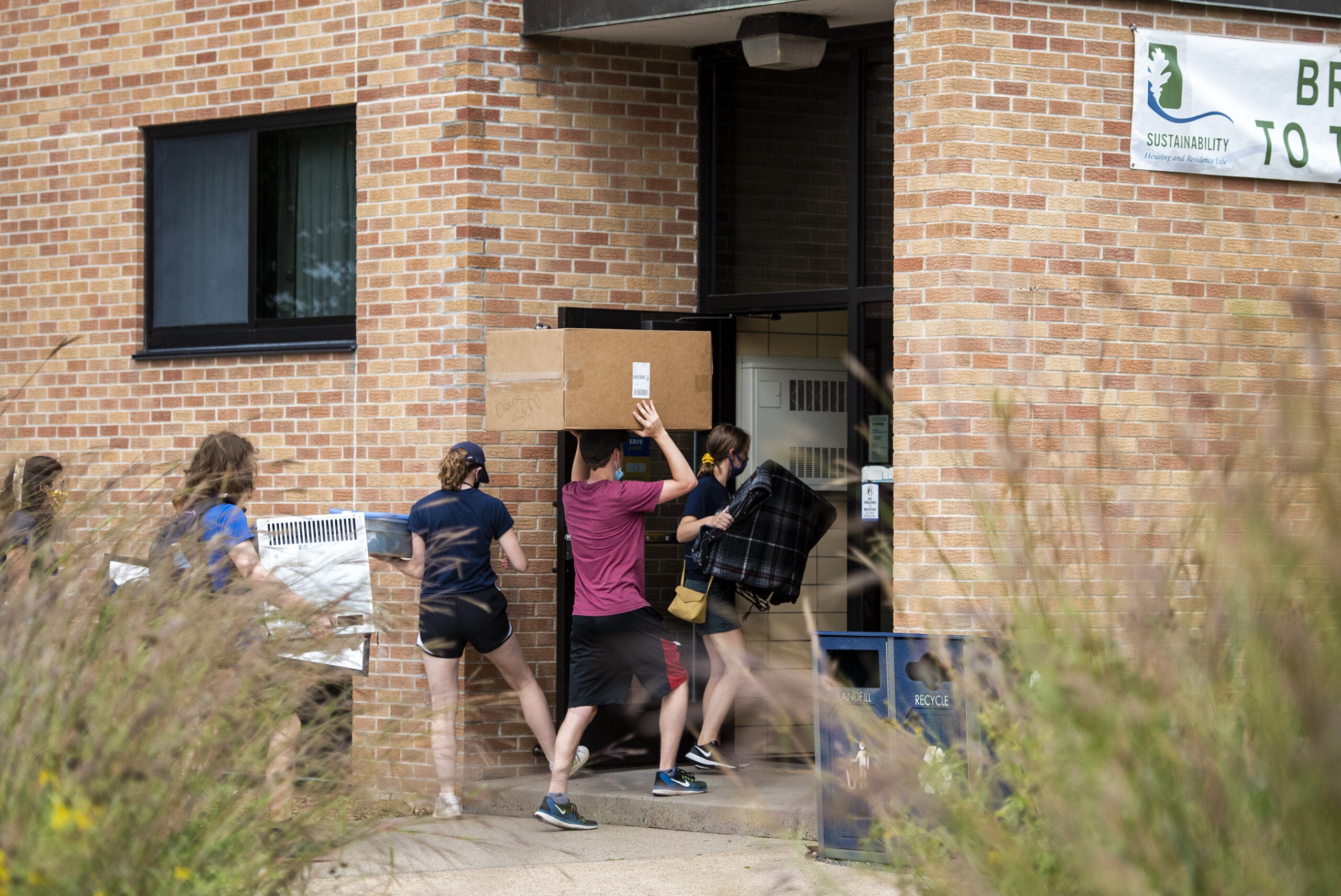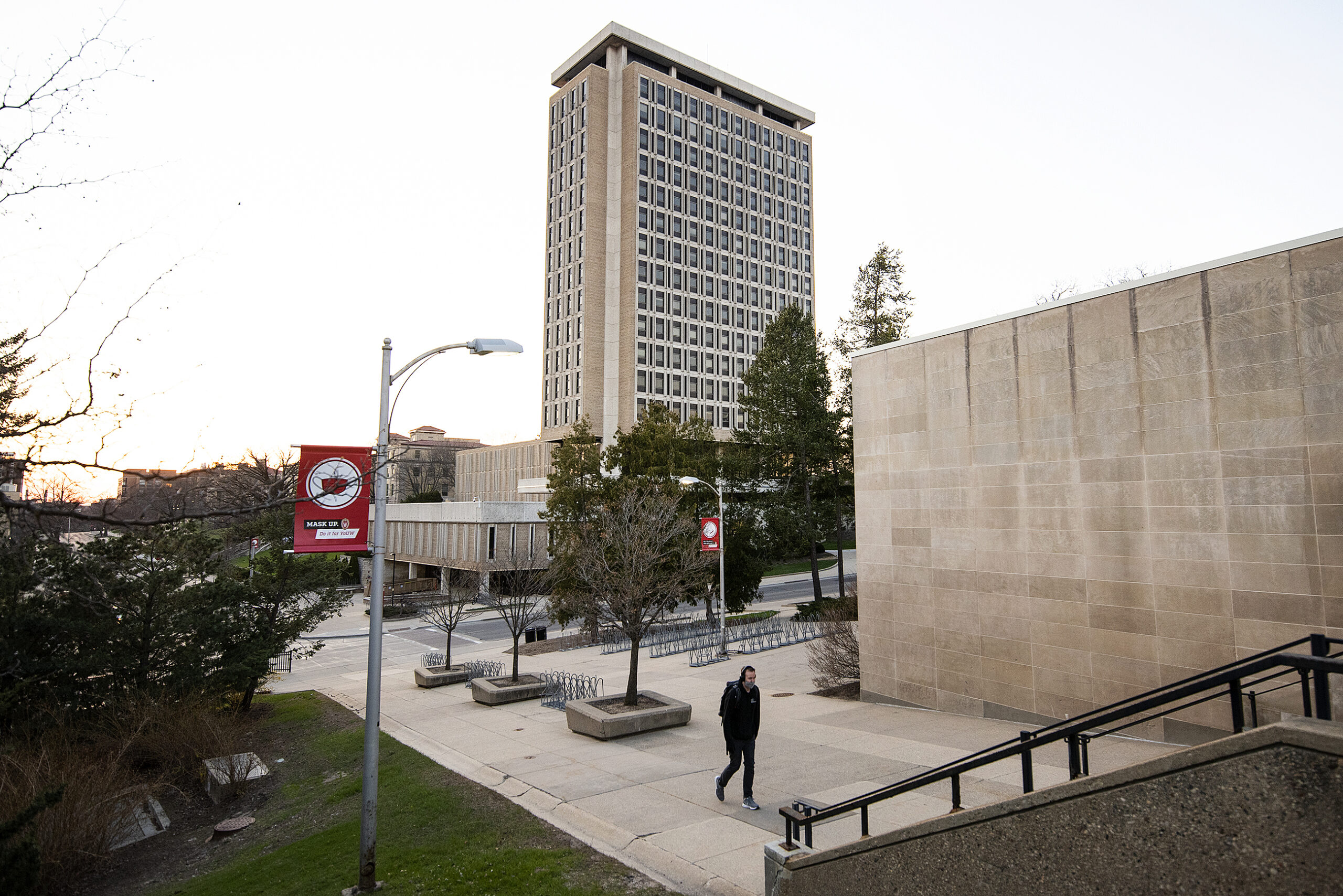Tuition fund balances at University of Wisconsin System campuses have been reduced by an average of 53 percent since 2013, when some lawmakers condemned the accounts as “slush funds.” For UW-Stevens Point the tuition balance has decreased enough to trigger a financial recovery plan recently approved by UW System President Ray Cross.
The state’s 26 two- and four-year campuses had an estimated $257.7 million in tuition balances as of July 1, 2019. That’s down by more than half compared to the $551.5 million in tuition balances held by campuses in 2013. That’s when Republican leaders in the state Legislature balked at a memo prepared by the state’s nonpartisan Legislative Fiscal Bureau showing the UW System had large cash reserves. In turn, Republicans including Assembly Speaker Robin Vos, called for a freeze on tuition — now in its seventh year.
Tuition fund balances are revenues left over after expenses are paid in a prior campus budget year. The funds are used to safeguard a university against declines in revenue from tuition or reductions in state funding. The money can also be used to pay down debt or for building and renovation projects.
Stay informed on the latest news
Sign up for WPR’s email newsletter.
For individual campuses tuition balances vary.
According to UW System budget documents provided during the UW Board of Regents July 11 meeting, UW-Stevens Point had an estimated July tuition fund balance of $0, which triggered a financial recovery plan agreed to by the campus and Cross, according to testimony provided to regents by UW System Vice President for Finance Sean Nelson.
Officials with UW System Administration and UW-Stevens Point were unavailable for interviews about the financial recovery plan. Statements sent to WPR from the UW System and UW-Stevens Point say their current tuition fund balance is $800,000 as of July 15, which works out to around 1 percent of the campus’ operating budget.
Nick Schultz, director of media relations at UW-Stevens Point, said the campus will cut $8 million from its budget between fiscal years 2020-2022 per the recovery plan, which aligns with an $8 million structural deficit the university has been working to overcome over the past year. She continued that the plan is to reduce expenses by $2 million in 2020, $4 million in 2021 and another $2 million in 2022.
“UW-Stevens Point is part of a UW System, which works with all of its campuses to provide budgets, with flexibility, to ensure proposals align expenses with revenues,” Stevens Point Chancellor Bernie Patterson said in a written statement. “Reducing expenses over a three-year period will help UW-Stevens Point ensure financial sustainability as we continue focusing on our primary goal: Student success.“
UW-Parkside has the highest estimated tuition balance as of July at $8.4 million, which is just under 20 percent of its 2019-2020 operating budget.
The rest of the UW System four-year campuses tuition balances were somewhere in the middle, with five campuses holding balances between 6 percent and 8 percent of their operating budget.
UW-Madison’s tuition fund balance is just more than 6 percent of it’s operating budget. A statement from spokeswoman Meredith McGlone said the balance dropped to $61.5 million this year.
“This is only 6.2 percent of UW-Madison’s total tuition- and state-funded operating budget – well below thresholds established by Regent and legislative policies,” wrote McGlone. “These thresholds are intended to ensure the university is prepared to handle emergencies and other unanticipated situations.”
The percentages matter because a UW-System Board of Regents policy created in 2013 directed institutions to set a 12 percent tuition fund balance. The policy required campuses with higher tuition balances to submit reports justifying them.
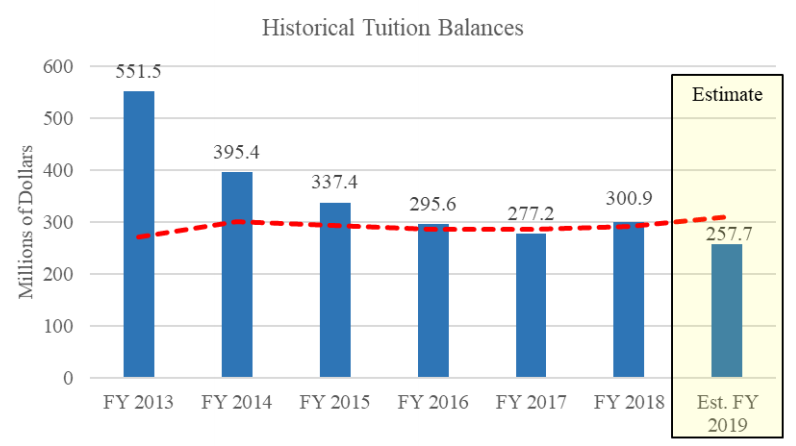
During the July 11 Regents meeting, some members voiced frustration with the ongoing tuition freeze even though the UW System as a whole has met the 12 percent threshold. Regent Bob Atwell told the board that it “takes a brave legislator” to vote to lift the multi-year tuition freeze, which makes it incumbent on the board to foster a “more informed” public discussion about the freeze.
“I just think it’s critical that we help the Legislature arrive at a different conclusion in the next biennium,” said Atwell.
Regent Tracey Klein echoed Atwell’s concerns and urged board action.
“I really do think it’s time to take this issue up and do it in a concerted and forceful way with a plan behind and hopefully persuade the Legislature to restore the power to set tuition with this board,” said Klein.
Auxiliary Balances Grow
While the UW System’s tuition fund balances have decreased by half over the last seven years, its auxiliary balances grew by an estimated $96.6 million or just more than 51 percent between 2013 and 2019. Cross, the system president, voiced concern about the trend.
“The auxiliary piece of our fund balances has been the most troublesome for us because it’s been growing,” Cross told Regents.
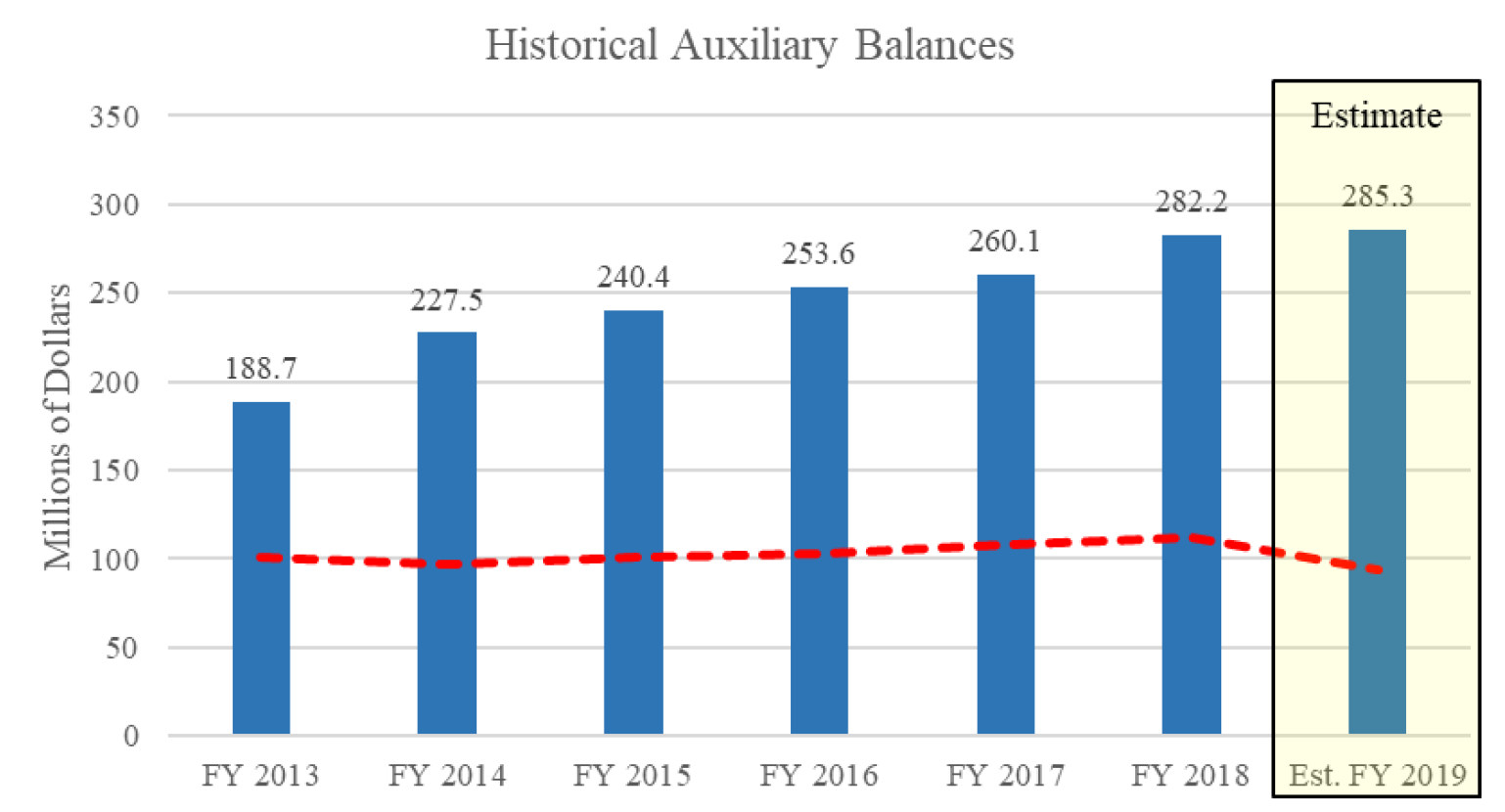
Auxiliary fund balances are leftover money from self-supporting programs aimed at funding student services like residence halls, student health clinics and student centers.
But Cross and UW Vice President of Finance Nelson said while the auxiliary fund balances are listed as “unrestricted program revenue” more than half of those funds have been dedicated toward new building and renovation projects at several campuses. Most of the remaining funds have been designated for paying off debt service.
“That 39 percent is the area that has been growing because campuses are setting aside funds for future debt obligations and that’s killing us right now,” Cross told the regents. “That’s the piece that’s hurting us.”
In total, UW System tuition fund and auxiliary fund balances have decreased by just under $198 million between the 2013 fiscal year and 2019 projections or just less than 27 percent according to UW budget figures.
Wisconsin Public Radio, © Copyright 2025, Board of Regents of the University of Wisconsin System and Wisconsin Educational Communications Board.

